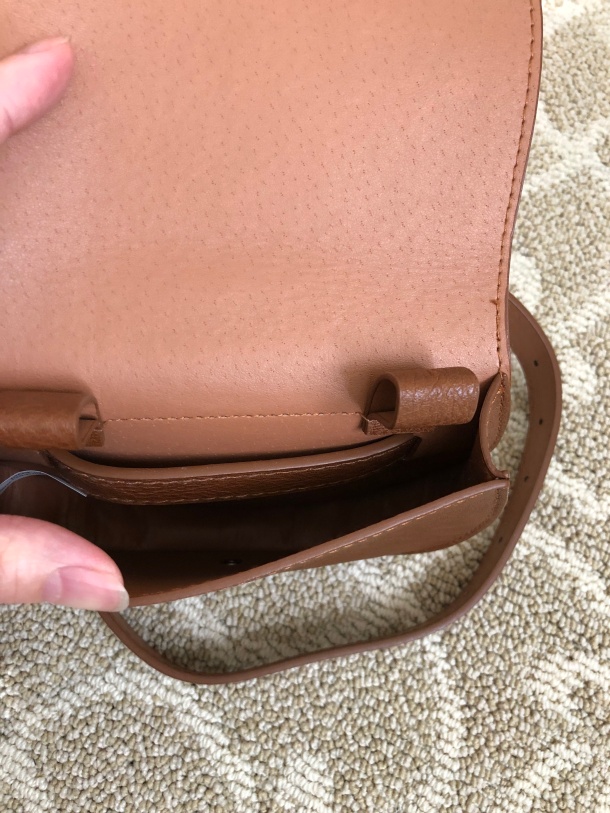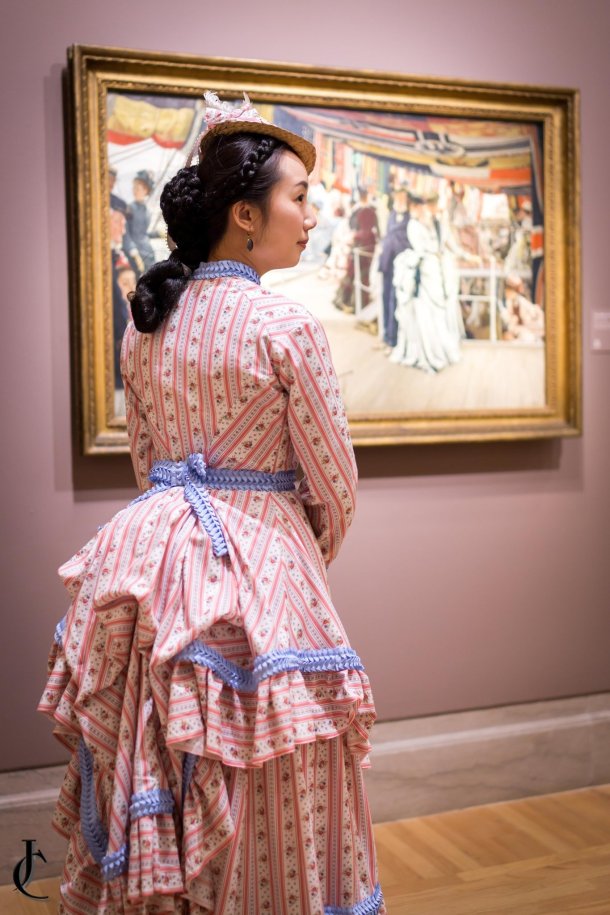Last month I made myself a cowgirl ensemble with a pair of split riding pants (with a button on panel to turn it into a skirt) using some cheerful blue wool and the 1919-1920 riding pants pattern by Wearing History.
The leftover wool was used for a self-drafted matching vest, lined with the same floral cotton as my blouse. 
I wore the ensemble during a ride on the Sacramento River Train with my local costume guild. 
At the event I wore the pants without the extra skirt panel, but for a future wearing I plan to use this versatile garment with the skirt panel buttoned in (which makes them surprise pants!) 
I used 20 silver-colored metal shank buttons that have been in my stash for years. I think I paid 25 cents a button a long time ago and have been saving them for a project that needed 20 buttons! I got the wool for a great bargain too ($20!)
The blouse was up-cycled from a second-hand cotton dress! I removed the skirt and used the extra fabric to make new sleeves and cuffs (replacing the 3/4 sleeves), extend the hem of the blouse, and also line my vest. (It would have been even less work to just cut the skirt off a few inches below the waist seam, but it had a lot of gathered material that would have created bulk below the split riding pants).

For my other accessories I wore American Duchess Tavistock boots, vintage fringed sueded gloves with studs, a wool hat with a silver emblem I got from Poshmark, and a pleather pouch from Amazon.


The pouch (Amazon affiliate link) had slits in the back for threading the belt through to wear as a hip pouch, plus internal loops to wear as a purse. It’s “old-time” enough that I think it’ll end up in other costume ensembles!
Some notes about the Wearing History pattern: It comes with a short and long version of the skirt. Since I had limited fabric I cut the shorter version and was able to get a vest out of the scraps. (I used 3 yards of 54″ wool). The pants are unlined. The skirt panel is faced with self-fabric and contains all the buttonholes while the buttons are sewn onto the pants. There are two options to attach the skirt panel. You can have one side sewn into the seam of the pants (which means you won’t lose the panel and you can make half as many buttonholes) or you can have the panel completely removable. If you have the panel attached you fold it over to one side and button it down. I opted to have the panel completely removable because my self-faced fabric folded over would have meant 4 layers of medium-weight wool and more bulk than I wanted. (If you use a lightweight wool or other fabric you don’t have to be concerned about that).
The skirt panel is faced with self-fabric and contains all the buttonholes while the buttons are sewn onto the pants. There are two options to attach the skirt panel. You can have one side sewn into the seam of the pants (which means you won’t lose the panel and you can make half as many buttonholes) or you can have the panel completely removable. If you have the panel attached you fold it over to one side and button it down. I opted to have the panel completely removable because my self-faced fabric folded over would have meant 4 layers of medium-weight wool and more bulk than I wanted. (If you use a lightweight wool or other fabric you don’t have to be concerned about that).
The back of the skirt has an inverted box pleat that you can stitch down the center back seam. I did not do the stitching, in order to make the back more skirt-like. 
The pants are very full so even if the skirt is buttoned in place in the front there should be plenty of range of motion due to the extra fabric in the sides and back.
Pattern difficulty is “advanced” according to Wearing History. This is because this is a reproduction of an antique pattern from 1919-1920 and assumes certain basic knowledge. Wearing History has added some really helpful notes, but this is not the kind of modern pattern that has step-by-step illustrations. You should know how to make and attach a placket for the opening and the facings on the bottom hem. (These are rectangular pieces you make yourself from scraps, and are not included in the pattern).
I am an experienced costumer maker and have made pants before, so I did not find this pattern particularly difficult, but it is not a beginner pattern for sure. I highly recommend this pattern if you are experienced or an ambitious intermediate seamstress. It was definitely fun to wear with the rest of my guild!
The last 3 photos are by Lauren Moyer, one of our wonderful GBACG board members.
Giddyap!

























